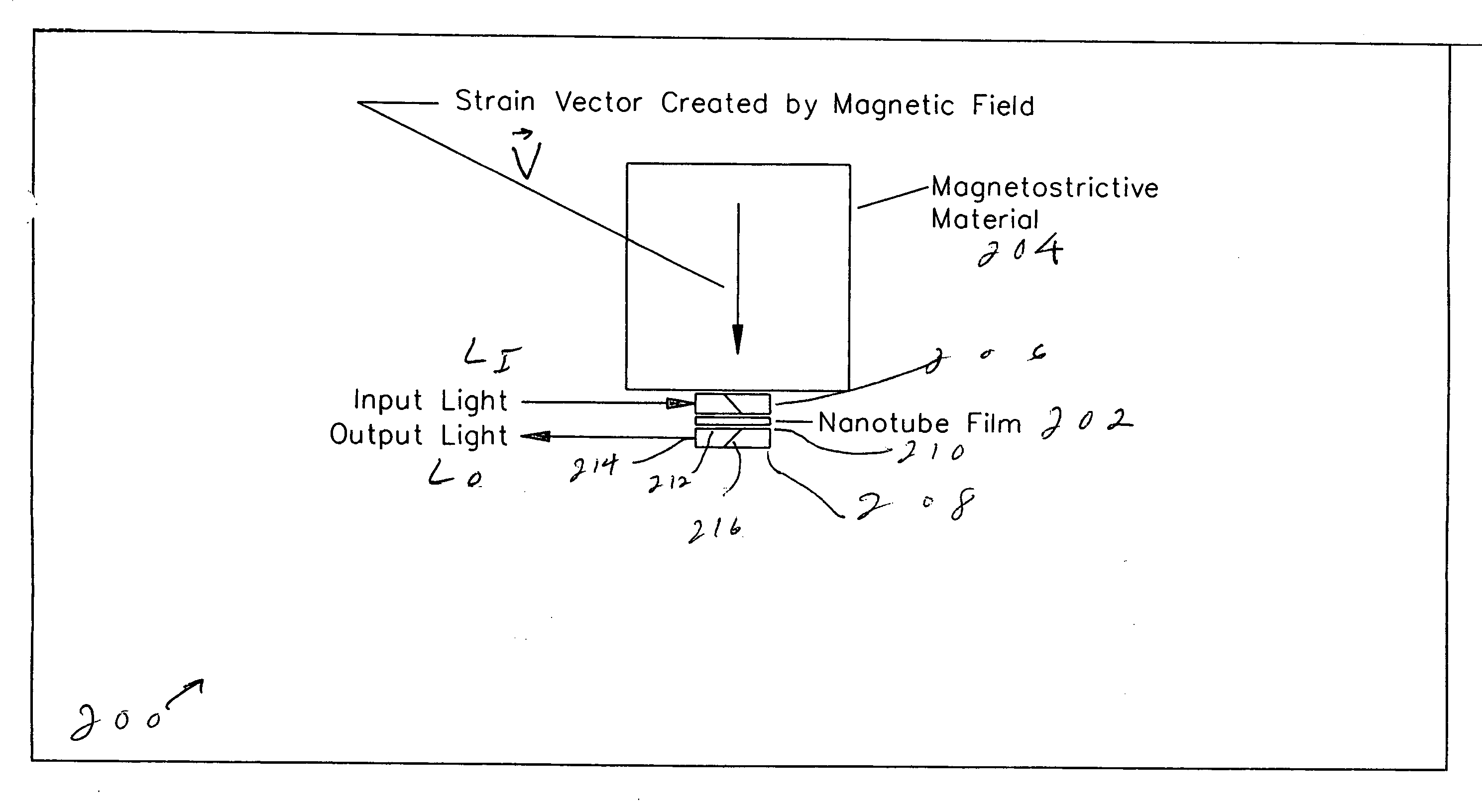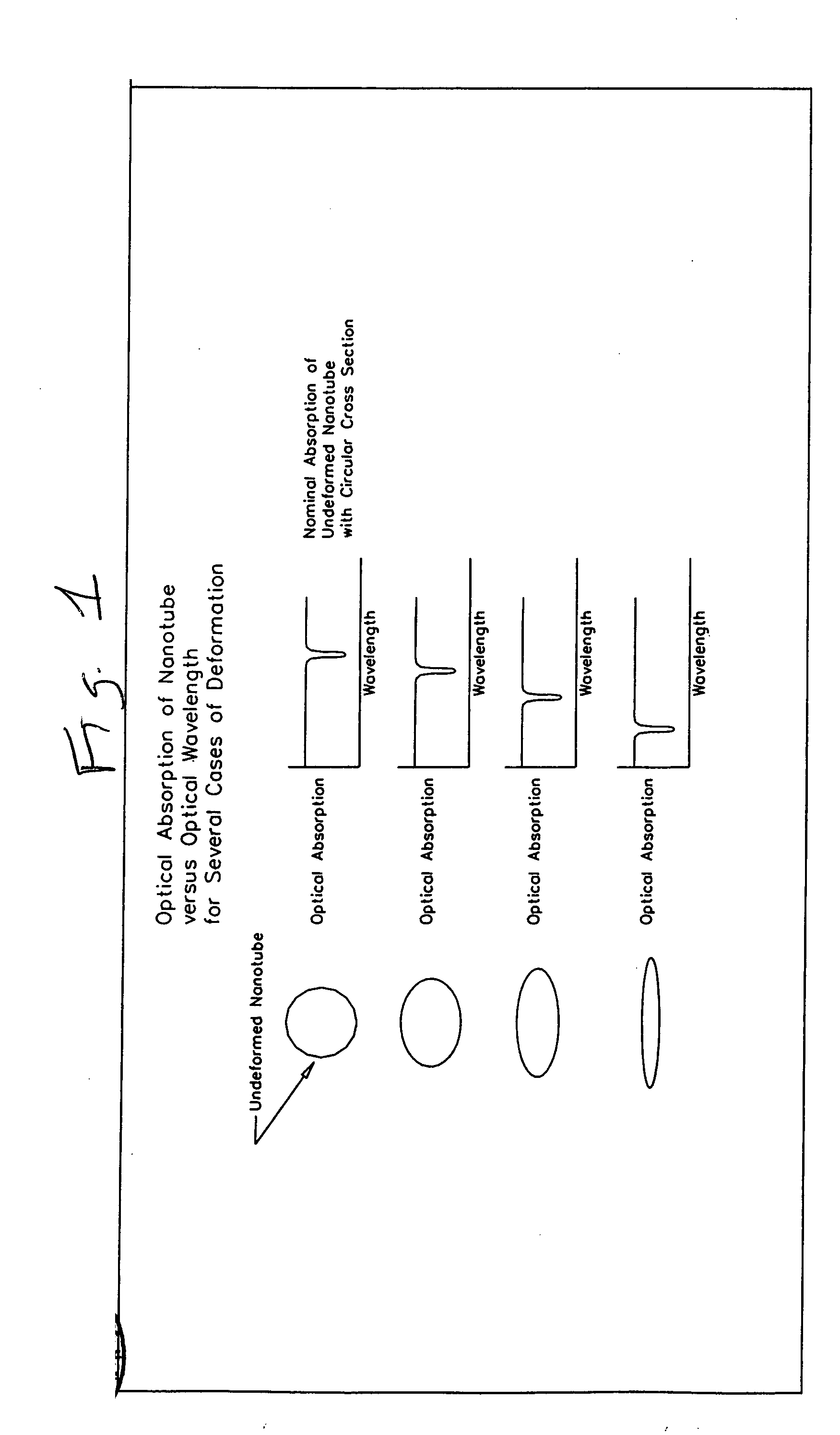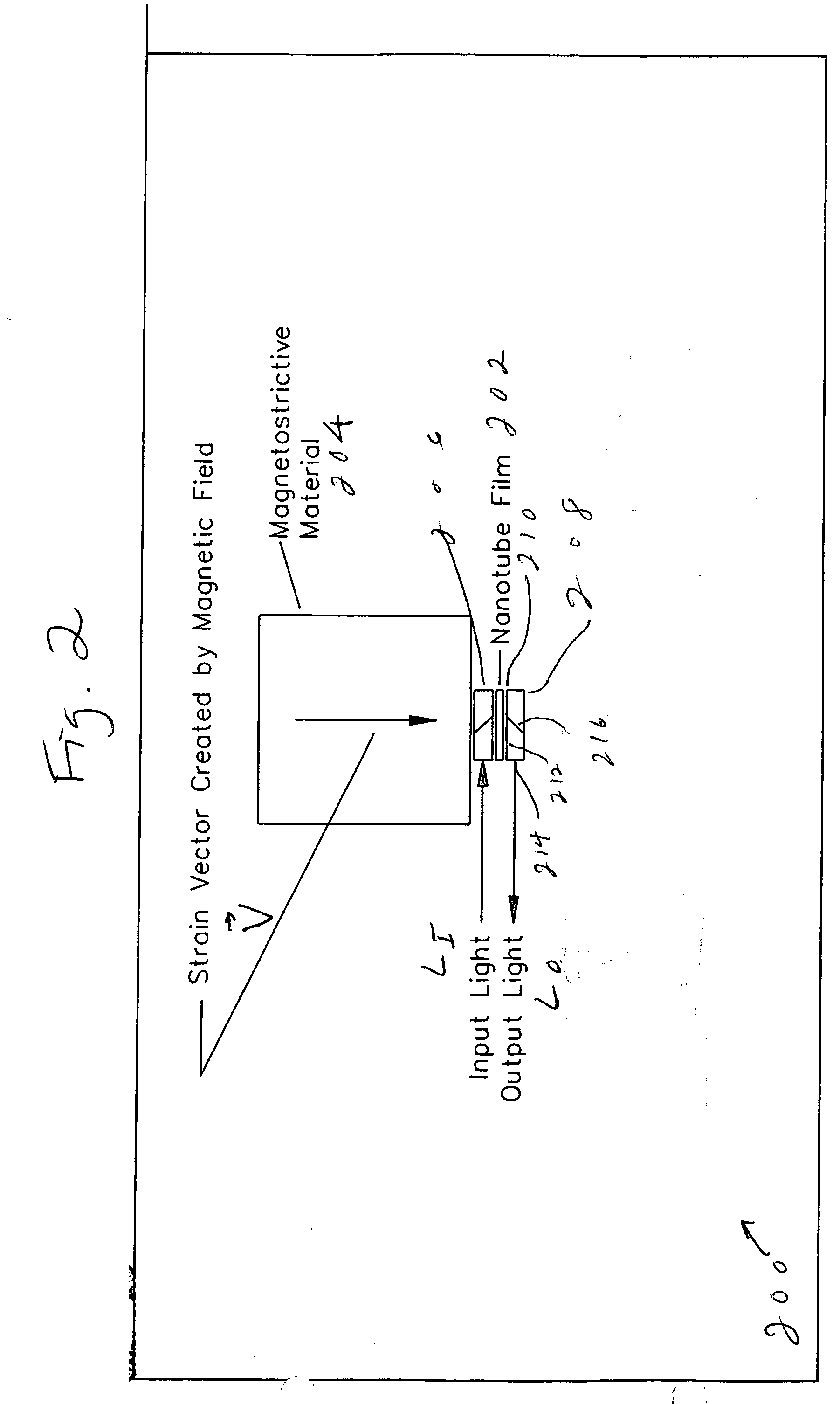Passive optical sensor using carbon nanotubes
a carbon nanotube and optical sensor technology, applied in the field of passive optical sensors, can solve the problems of optical interconnections that demonstrate dramatic variation in amplitude loss, the information encoding method that sends information regarding the value being measured in the form of amplitude modulation of light signals is not desired, and the requirements of no other technology have been able to demonstrate a potential, etc., to achieve the effect of modulating the fermi level in the nanotube and dramatic effect on nanotubes
- Summary
- Abstract
- Description
- Claims
- Application Information
AI Technical Summary
Benefits of technology
Problems solved by technology
Method used
Image
Examples
Embodiment Construction
[0043] Two preferred embodiments of the present invention will be set forth in detail with reference to the drawings, in which like reference numerals refer to like elements throughout.
[0044] A first preferred embodiment will now be set forth with reference to FIGS. 1 and 2. FIG. 1 shows the optical absorption spectrum of a carbon nanotube as a function of the degree of deformation. The left column shows various states of deformation, from no deformation at all (top) to extreme deformation (bottom). The right column shows the absorption spectrum for each degree of deformation. The notch, indicating the optical absorption wavelength, moves to the left, indicating absorption at lower wavelengths, as the deformation decreases.
[0045]FIG. 2 shows a magnetic field sensor 200 based on this effect. The parameter to be measured is converted into a physical compression on a nanotube film 202 on an optical surface. In the case of the magnetic field sensor 200, a magnetostrictive material 204...
PUM
| Property | Measurement | Unit |
|---|---|---|
| angle | aaaaa | aaaaa |
| physical quantity | aaaaa | aaaaa |
| semiconducting | aaaaa | aaaaa |
Abstract
Description
Claims
Application Information
 Login to View More
Login to View More - R&D
- Intellectual Property
- Life Sciences
- Materials
- Tech Scout
- Unparalleled Data Quality
- Higher Quality Content
- 60% Fewer Hallucinations
Browse by: Latest US Patents, China's latest patents, Technical Efficacy Thesaurus, Application Domain, Technology Topic, Popular Technical Reports.
© 2025 PatSnap. All rights reserved.Legal|Privacy policy|Modern Slavery Act Transparency Statement|Sitemap|About US| Contact US: help@patsnap.com



